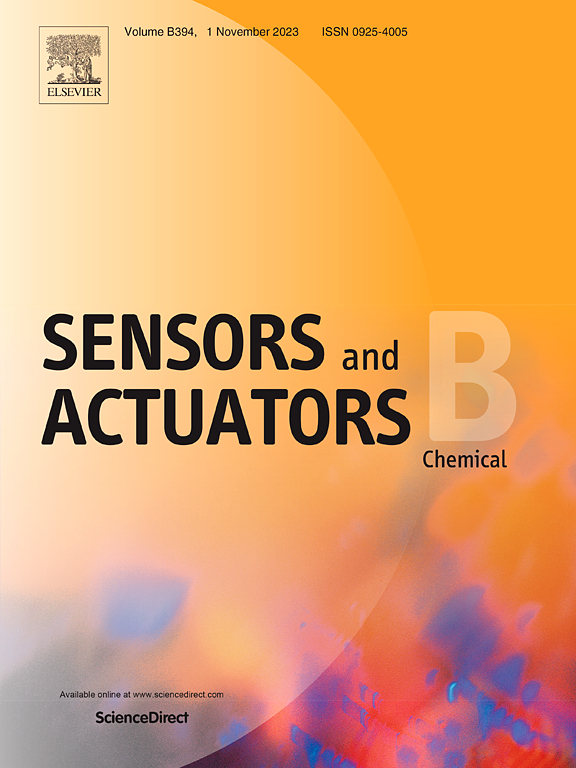Mn-doped ZnS quantum dots@dendritic mesoporous silica phosphorescent nanocomposites for antimicrobial susceptibility testing
IF 8
1区 化学
Q1 CHEMISTRY, ANALYTICAL
引用次数: 0
Abstract
The excessive use of antibiotics has accelerated the rise of antimicrobial resistance (AMR), and rapid antimicrobial susceptibility testing (AST) is very important for the early detection, early prevention and treatment of AMR. On this basis, we combined manganese-doped zinc sulfide quantum dots (Mn-ZnS QDs) with aminated dendritic mesoporous silica nanoparticles (DMSNs-NH2) to prepare Mn-ZnS QDs@DMSNs-NH2 room-temperature phosphorescent (RTP) nanocomposites·H2O2 can quench the RTP of Mn-ZnS QDs@DMSNs-NH2 nanocomposites, while catalase-positive bacteria can cause the hydrolysis of H2O2. Hence, RTP detection of different antibiotic tolerance for Staphylococcus aureus (S. aureus) and methicillin-resistant Staphylococcus aureus (MRSA) was achieved. This sensing system can achieve rapid bacterial detection and AST through the difference in RTP intensity. Experimental results demonstrated that the linear detection range for bacteria is 0 × 105-64 × 105 CFU·mL−1, with a limit of detection (LOD) of 1 × 105 CFU·mL−1 for MRSA and 0.7 × 105 CFU·mL−1 for S. aureus. The pore confinement effect of DMSNs-NH2 can induce the aggregation of Mn-ZnS QDs, which strengthens the RTP of Mn-ZnS QDs@DMSNs-NH2 nanocomposites and improves the sensitivity of RTP detection. This method is not only free from sample background fluorescence interference, but also shortens the AST time (less than 90 min), making antibacterial treatment more time-saving and efficient and reducing patient pains. This nanosensor provides a new strategy for rapid clinical bacterial detection and effective assessment of antimicrobial susceptibility.

求助全文
约1分钟内获得全文
求助全文
来源期刊

Sensors and Actuators B: Chemical
工程技术-电化学
CiteScore
14.60
自引率
11.90%
发文量
1776
审稿时长
3.2 months
期刊介绍:
Sensors & Actuators, B: Chemical is an international journal focused on the research and development of chemical transducers. It covers chemical sensors and biosensors, chemical actuators, and analytical microsystems. The journal is interdisciplinary, aiming to publish original works showcasing substantial advancements beyond the current state of the art in these fields, with practical applicability to solving meaningful analytical problems. Review articles are accepted by invitation from an Editor of the journal.
 求助内容:
求助内容: 应助结果提醒方式:
应助结果提醒方式:


